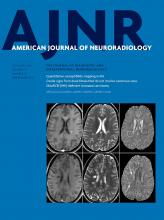We thank Drs Vargas and Lovblad for their interest and comments on our article investigating the influence of CTA tube current on spot sign detection and prediction of intracerebral hemorrhage expansion. The role of dual-energy CT (DECT) in spot sign identification has not been extensively and systematically investigated, to our knowledge, and we agree that more research on the use of this technique is needed. DECT can distinguish different types of materials with high sensitivity and specificity.1,2 As shown in the figure provided by Drs Vargas and Lovblad, DECT can remove spots of iodine extraction from the virtual noncontrast images and map them to the iodine-overlay images. The degree to which this separation is effective and the minimum concentration of extravasated iodine separable from hematoma, in situ, are currently unknown. Therefore, how the single-energy CT spot sign should be translated in the context of dual-energy remains a topic of research. For example, it is not clear whether one should be counting the number of spots on the iodine-overlay images or computing the total amount of extravasated iodine in the iodine-overlay images. We would like to highlight the following additional points:
There is great heterogeneity in the CTA acquisition protocol,3 and several factors such as the time from stroke onset to CTA and acquisition of delayed images4,5 can influence the rate of spot sign identification and its ability to identify patients at high risk of hematoma expansion. Therefore, the relatively low sensitivity (53%) reported by Du et al6 in a recent meta-analysis cannot be directly attributed to the use of DECT.
It is difficult to compare the frequency and diagnostic performance of the spot sign across different studies because several definitions of spot sign and hematoma expansion have been reported and used in clinical practice.4
DECT has the ability to reduce artifacts and to remodel the signal-to-noise ratio7 and may therefore provide an additional diagnostic value in case of poor-quality scans.
Vascular and nonvascular cerebral lesions like aneurysms or calcifications can mimic the spot sign,8 and DECT appears superior to conventional CTA in the identification of these mimics.7
There are multiple implementations of DECT, and not all of them are dose-neutral compared with a single-energy CT scan. In general, the advantages of DECT use need to be balanced against the risk of increased radiation delivery.9
In conclusion, DECT is a promising technique, but its role in spot sign identification is still unclear.
References
- © 2016 by American Journal of Neuroradiology












